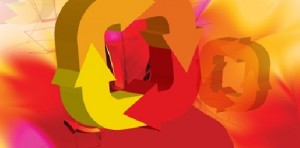Darling-Hammond (2006) teacher education
Darling-Hammond, L. (2006). Constructing 21st-century teacher education. Journal of Teacher Education, 57(3), 300-314.
I’ve been skim reading a few books on teacher education and so many refer to this article that it jumped to the top of my reading list.
Teaching is often viewed as simplistic by laypeople and novice teachers; however, teaching is non-routine, unpredictable and requires diverse and flexible teaching and reflective skills to handle diverse learners’ needs in increasingly complex contexts.
Novice teachers need to overcome three challenges. First, “the apprenticeship observation” (Lortie, 1975), i.e. past student learning experiences need to be separated from new learning to teach experiences. Second, “the problem of enactment” (Kennedy, 1999), i.e. more than just understand teaching, but be able to actually teach. Third, “the problem of complexity” (Jackson, 1974), i.e. “understand and respond to the dense and multifaceted nature of the classroom, juggling multiple academic and social goals requiring trade-offs from moment to moment (Darling-Hammond, 2006).
Teacher education must address the influence of previous teaching observations, perceived separation of theory and practice, limited cultural perspectives, and the need for multiple tasks in complex settings. In addition, teacher education must focus on knowledge about learning and learners, and skills for curriculum development, classroom management, teaching and assessment. To achieve this, teacher education programs need to use a clear single vision for theory and practice; have transparent achievement standards; integrate theory and extensive, intensive, reflective practice (Ball & Cohen,1999); use real cases and research; confront assumptions; work together with schools to improving learning, teaching and teacher education.
Although novice teachers enter teaching with existing beliefs from student learning experiences, many teacher educators argue that novice teachers who have teaching experience are better prepared to integrate the theory and practice of teacher education (Baumgartner, Koerner, & Rust, 2002; Denton, 1982; Henry, 1983; Ross, Hughes, & Hill, 1981; Sunal, 1980). However, many short cut programs designed for working novice teachers minimize teaching and curriculum theory and focus on survival needs. Furthermore, novice teachers frequently demand classroom management strategies instead of improving teaching and curriculum knowledge, a lack of which may cause classroom difficulties (Shields et al., 2001).


